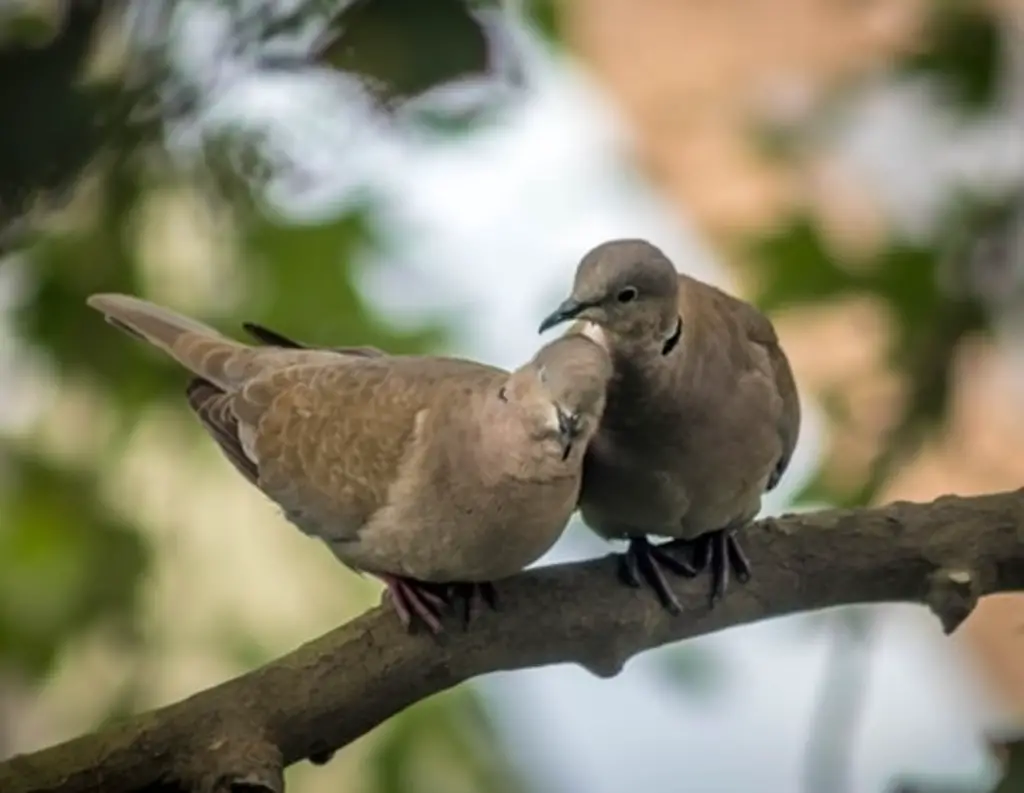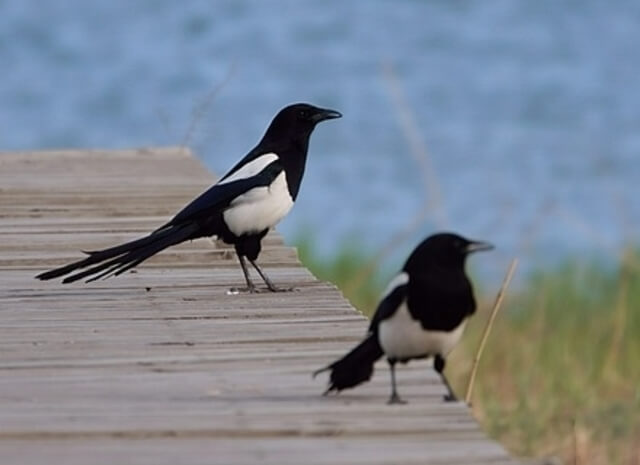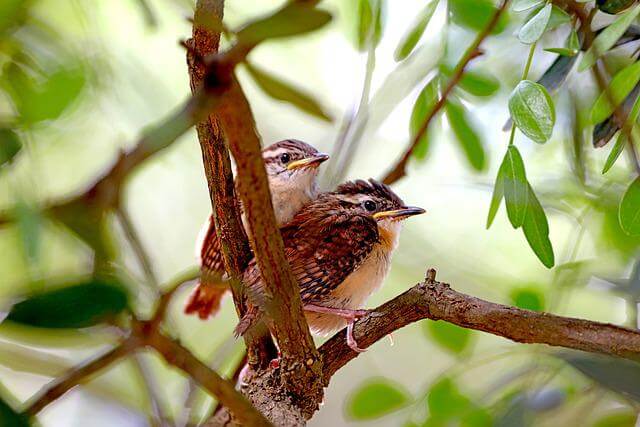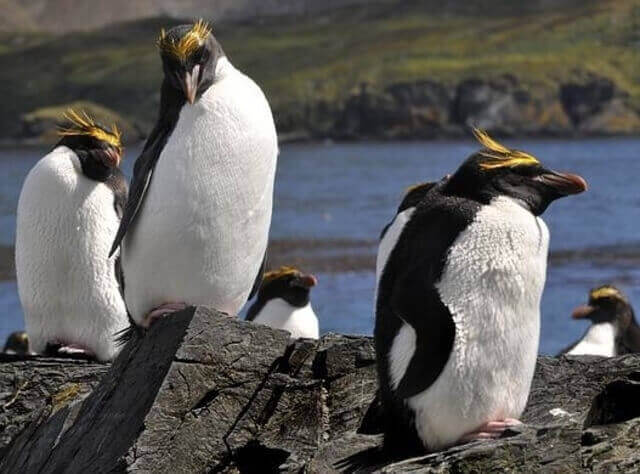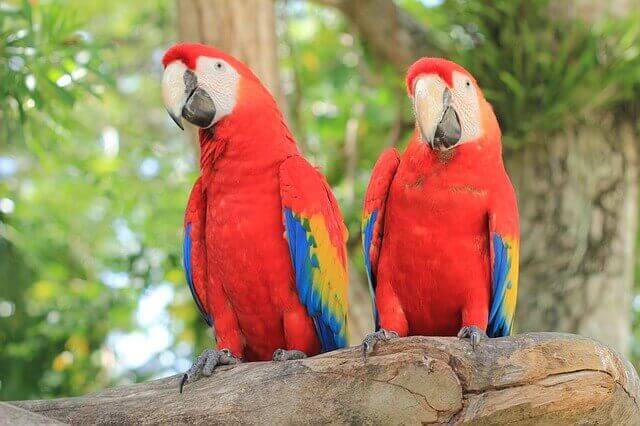Birds, sometimes underappreciated yet crucial to our ecosystem, possess a remarkable trait – lifelong monogamy. In this article, we’ll delve into the captivating world of 21 beautiful birds that mate for life, unraveling what makes them truly exceptional.
Table of Contents
- 1 Types Of Birds That Mate For Life
- 1.1 Northern Cardinals
- 1.2 Black-billed Magpies
- 1.3 Blue Jays
- 1.4 Carolina Wrens
- 1.5 Black Vultures
- 1.6 Californian Condors
- 1.7 Andean Condor
- 1.8 Macaroni Penguins
- 1.9 Mute Swans
- 1.10 Laysan Albatross
- 1.11 Canada Geese
- 1.12 Bald Eagles
- 1.13 Golden Eagles
- 1.14 Gyrfalcons
- 1.15 Sandhill Cranes
- 1.16 Whooping Cranes
- 1.17 Barn Owls
- 1.18 Lovebirds
- 1.19 Mourning Doves
- 1.20 Scarlet Macaws
- 1.21 Atlantic Puffins
- 2 Author
Types Of Birds That Mate For Life
Northern Cardinals
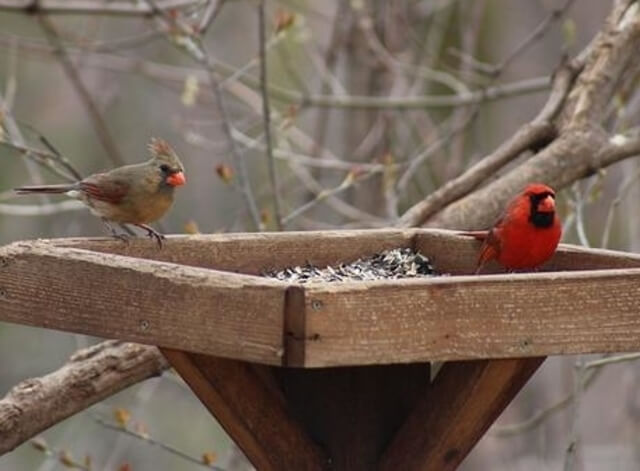
Northern Cardinals are one of the most common backyard birds in America. They are found in open woodlands, parks, and gardens. Cardinals prefer to live in areas with dense shrubs and trees that provide both food and shelter.
Their diet consists mostly of seeds, but they will also eat insects, fruits, and berries. Cardinals form monogamous pairs that mate for life. They typically raise two or three broods per year.
| Monogamous Behavior |
|---|
| Northern Cardinals typically mate for life. They form monogamous pairs and share various aspects of their lives, including nest building, incubation, and feeding their young. They are known for their strong and long-lasting bonds. |
Black-billed Magpies
The Black-billed Magpie (Pica hudsonia) is a medium-sized black and white bird that ranges from southwestern Canada to central Mexico. Black-billed Magpies are common in open habitats such as agricultural land, prairies, and open woodlands.
These birds are omnivores, consuming a variety of insects, small mammals, eggs, and fruit. Black-billed Magpies are monogamous and form breeding pairs that stay together for multiple seasons. Nests are constructed of twigs and other materials high in trees or on cliffs, typically laying between 4 and 7 eggs.
| Monogamous Behavior |
|---|
| Black-billed Magpies are known for their monogamous mating behavior. They form long-term pair bonds and work together in various aspects of their lives, including building nests, incubating eggs, and caring for their offspring. These birds display strong monogamous relationships. |
Blue Jays
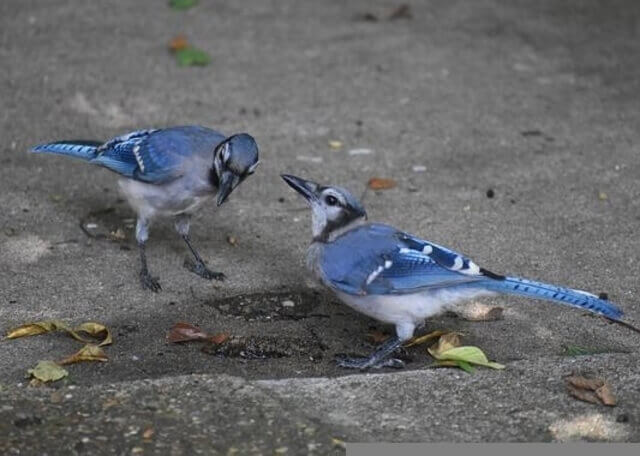
The Blue Jay (Cyanocitta cristata) is a passerine bird in the family Corvidae. It is the largest member of the genus Cyanocitta. The Blue Jay ranges from Southern Canada to Northern Mexico and is found in open and deciduous forests.
They are omnivorous, eating a variety of foods such as insects, nuts, seeds and fruit. Blue Jays are monogamous and mate for life. Nests are typically built in trees and can be reused for many years.
| Monogamous Behavior |
|---|
| Blue Jays also exhibit monogamous behavior. They form long-term pairs and maintain strong bonds. These pairs cooperate in raising their young, sharing responsibilities such as nest building, incubation, and feeding. Blue Jays are known for their fidelity to their partners. |
Carolina Wrens
The Carolina Wren is a small songbird found in the eastern and central United States. They range from southern Canada to central Mexico, and can be found in a variety of habitats, including forests, marshes, and suburban areas.
Carolina Wrens are omnivorous, eating insects, fruits, and seeds. They are monogamous and form strong pair bonds. The female builds a nest of grasses, leaves, and twigs in a tree or bush, and the male helps incubate the eggs and feed the young.
| Monogamous Behavior |
|---|
| Carolina Wrens are known for their monogamous behavior. They form long-lasting pairs, often remaining together for life. These pairs share responsibilities in raising their young, including nest building and feeding. Their strong bond is a key aspect of their breeding and family life. |
Black Vultures
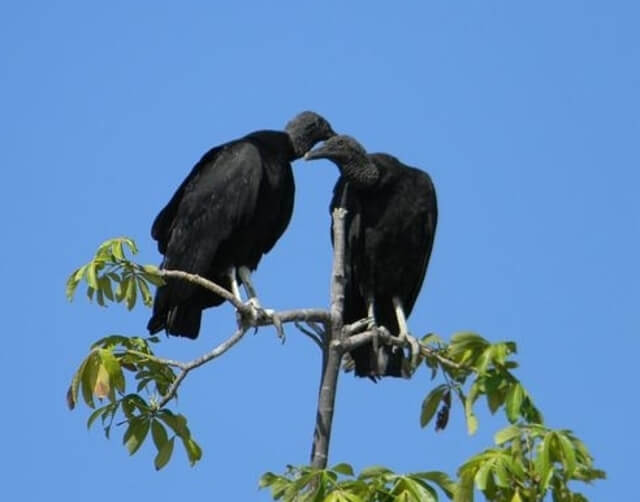
Black Vultures are the most common vulture in North America. They range from southern Canada to central Mexico and can be found in a variety of habitats, including forests, swamps, deserts and open fields.
Black Vultures primarily eat carrion, but they will also eat small animals, such as rodents, snakes and lizards. Black Vultures are monogamous birds that mate for life. The female builds a nest out of sticks and lays two or three eggs. Both parents help to incubate the eggs and care for the young.
| Monogamous Behavior |
|---|
| Black Vultures often exhibit monogamous behavior during the breeding season. They form monogamous pairs and work together in building nests, incubating eggs, and raising their young. These pairs can stay together for years, sometimes even for life. |
Californian Condors
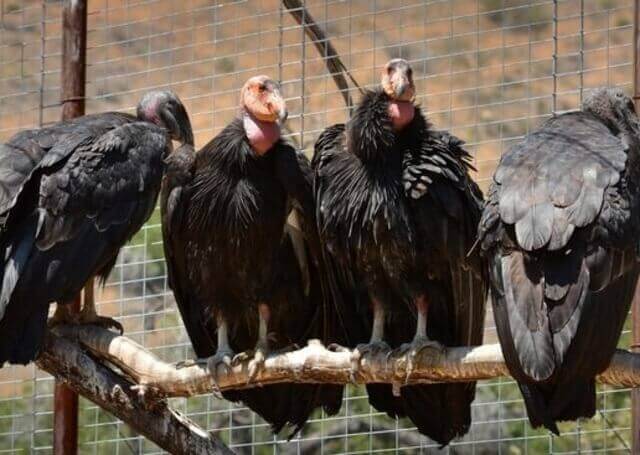
Californian Condors are one of the world’s largest birds. They have a wingspan of up to 9 feet and can weigh up to 25 pounds. These birds are found in the southwestern United States and northwestern Mexico.
They live in mountain ranges and desert areas. Their diet consists mostly of carrion, but they will also eat small mammals, reptiles, and insects. They mate for life and typically return to the same nesting site each year.
| Monogamous Behavior |
|---|
| California Condors are known for forming strong monogamous pairs. They engage in long-term relationships and often mate for life. These monogamous bonds are essential for successful breeding and raising their young. The male and female share parenting responsibilities, including incubating the eggs and feeding the chicks. |
Andean Condor
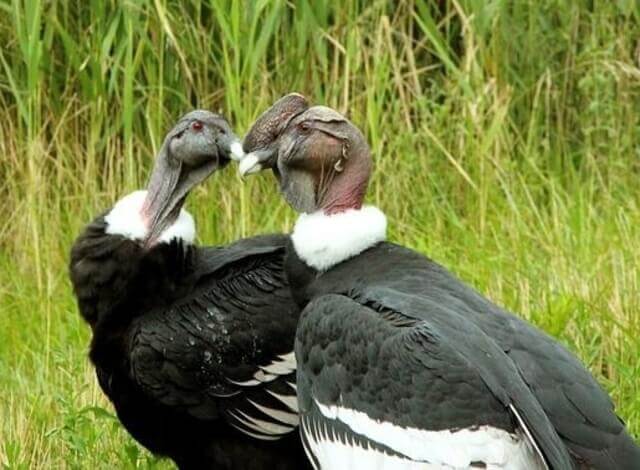
The Andean Condor inhabits the high Andes of South America. They live in rocky, mountainous areas and also along the coastal cliffs. The Andean Condor is a scavenger and feeds on carrion, which can be difficult to find in their high-altitude habitat.
They are monogamous and mate for life. Nests are made from sticks and are placed on cliff ledges or in tall trees. Two eggs are laid, which the parents take turns incubating for 54 days. Chicks fledge at around 3 months old, but stay close to their parents until they are about a year old.
| Monogamous Behavior |
|---|
| Andean Condors are known to form long-term monogamous pairs. They mate for life and engage in shared activities, including nest building, incubating eggs, and raising their offspring. Their strong bonds contribute to successful breeding and offspring rearing. |
Macaroni Penguins
The Macaroni Penguin is a species of penguin that ranges across the southern oceans. They are found in the waters off Argentina, Australia, Chile, and South Africa. The Macaroni Penguin’s habitat is primarily rocky shores and islands, where they build nests out of stones. They are also known to inhabit estuaries and bays.
These penguins are omnivorous and eat a variety of prey items such as fish, squid, krill, and crustaceans. They have also been known to scavenge for food items on the shoreline. Research has shown that these penguins are monogamous, and pairs typically stay together for multiple breeding seasons.
| Monogamous Behavior |
|---|
| Macaroni Penguins are known for their monogamous behavior. They form long-lasting pairs, often returning to the same mate year after year. These monogamous pairs collaborate in nesting, incubating eggs, and raising their chicks. Their strong bond plays a crucial role in the survival of their offspring. |
Mute Swans

Mute swans are a large waterfowl that is found in North America, Europe and Asia. They are the largest of all the swans and have a wingspan of up to 7 feet. Male mute swans are called cobs and females are called pens. Mute swans live in freshwater habitats such as lakes, ponds and marshes but can also be found near the ocean.
They eat a variety of things such as aquatic plants, small fish, crustaceans and insects. Mute swans form monogamous pairs and mate for life. The female will lay between 4-8 eggs, which both parents will help to incubate. After hatching, the parents will care for the young swans until they are able to fly and fend for themselves.
| Monogamous Behavior |
|---|
| Mute Swans are well-known for their monogamous nature. They form long-lasting pair bonds that often last for life. These pairs work together in various aspects of their lives, such as nesting, incubating eggs, and raising their cygnets. Their strong and faithful partnerships are a prominent feature of their behavior. |
Laysan Albatross
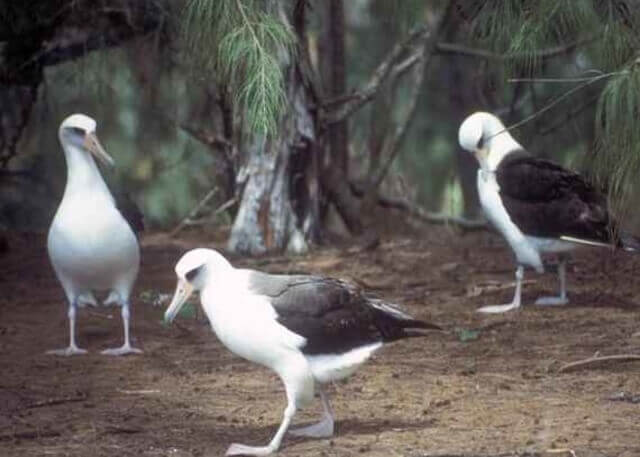
Laysan Albatrosses are seabirds that can be found in the North Pacific Ocean. They are the most common albatross species in the world and are known for their monogamous mating habits. Laysan Albatrosses have a range of up to 8,000 kilometers and prefer to live in areas where there is an abundance of food.
They feed mainly on fish, squid, and crustaceans, although they will also eat barnacles, jellyfish, and other marine creatures.
| Monogamous Behavior |
|---|
| Laysan Albatrosses are known for their monogamous behavior, often forming lifelong pairs. They return to the same nesting site year after year, reuniting with their mate. Both partners share the responsibilities of incubating the egg and caring for the chick. This strong monogamous bond plays a vital role in their reproductive success. |
Canada Geese
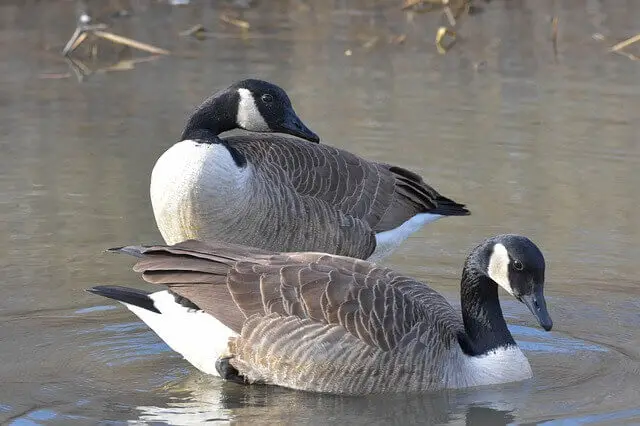
Canada Geese are a species of bird that is found all over the world. They are omnivores, which means that they eat both plants and animals. They live in a variety of habitats, including wetlands, fields, and parks. Geese are monogamous, meaning that they mate for life.
When they mate, the male and female form a bond that is very strong. They stay together until one of them dies. Geese can live up to 25 years in the wild.
| Monogamous Behavior |
|---|
| Canada Geese are known for their strong monogamous bonds. They typically mate for life and form lifelong partnerships with their chosen mates. These pairs work together in various aspects of their lives, including nesting, incubation, and raising their goslings. Their monogamous behavior is a remarkable aspect of their social structure. |
Bald Eagles

Bald Eagles are one of the most iconic birds in North America. These raptors range across most of the continent, from the Artic tundra to the Gulf of Mexico. Bald Eagles occupy a wide variety of habitats, including wetlands, forests, and estuaries.
They are opportunistic feeders and will eat a variety of prey items, including fish, amphibians, birds, small mammals, and carrion. Bald Eagles are monogamous and typically mate for life. Nests are often reuse year after year and can be quite large, weighing up to a ton or more.
| Monogamous Behavior |
|---|
| Bald Eagles are known for their strong monogamous bonds. They typically mate for life, forming long-lasting pairs. These pairs work together in raising their young, sharing responsibilities such as nest building, incubation, and providing food. The monogamous behavior of Bald Eagles contributes to their successful reproduction and family life. |
Golden Eagles
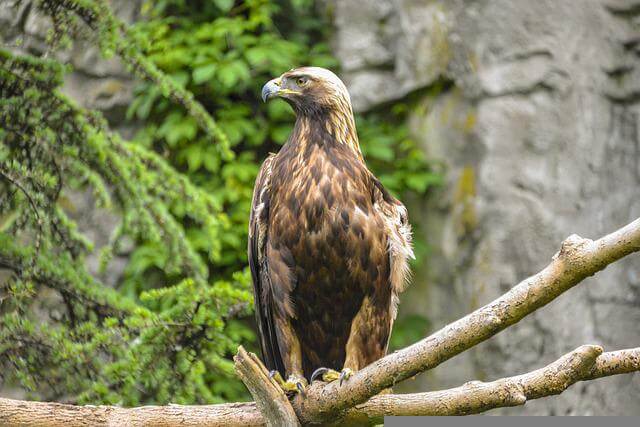
The Golden Eagle is among the largest birds of prey in North America. They live in a variety of habitats, including desert, woodland, and tundra. Golden eagles are opportunistic predators that feed on small mammals (such as rabbits, hares, and ground squirrels), birds (including pigeons, doves, and crows), reptiles (including snakes and lizards), and carrion.
Golden Eagles are monogamous birds that form long-term pairs and mate for life. Nests are typically built in tall trees or on cliffs. Egg clutches usually consist of 2-3 eggs.
| Monogamous Behavior |
|---|
| Golden Eagles often exhibit monogamous behavior during the breeding season. They form pairs and maintain strong bonds, sharing responsibilities in nesting and raising their young. While their monogamy is typically seasonal, some pairs may mate for multiple breeding seasons. |
Gyrfalcons
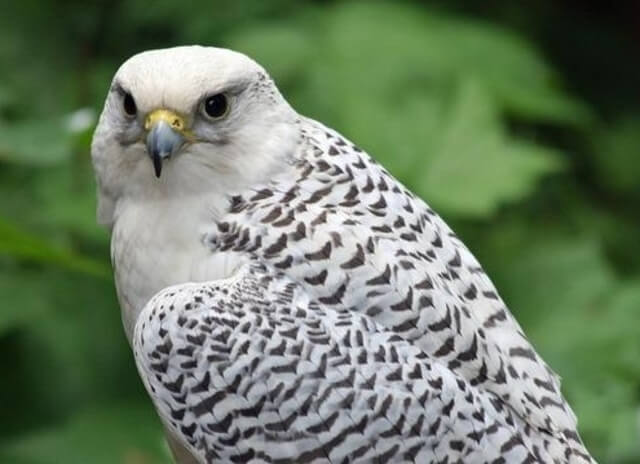
The Gyrfalcon is the largest and most powerful falcon in the world. They range throughout the Arctic, North America, Europe and Asia. In North America they are found in Alaska, Canada and the northernmost United States. Gyrfalcons live in a wide variety of habitats including tundra, taiga, open country and coastal habitats.
They eat a variety of prey including birds (up to the size of a Sandhill Crane), small mammals (weasels, hares) and fish. Gyrfalcons are monogamous and mate for life. Nests are typically built on cliffs but may also be found in trees or on the ground. The average clutch size is three eggs, but may be as many as six eggs.
| Monogamous Behavior |
|---|
| Gyrfalcons typically exhibit monogamous behavior during the breeding season. They form pairs and engage in cooperative nest building, incubating eggs, and raising their chicks. These raptors are known for their strong bonds, which help ensure successful reproduction. |
Sandhill Cranes
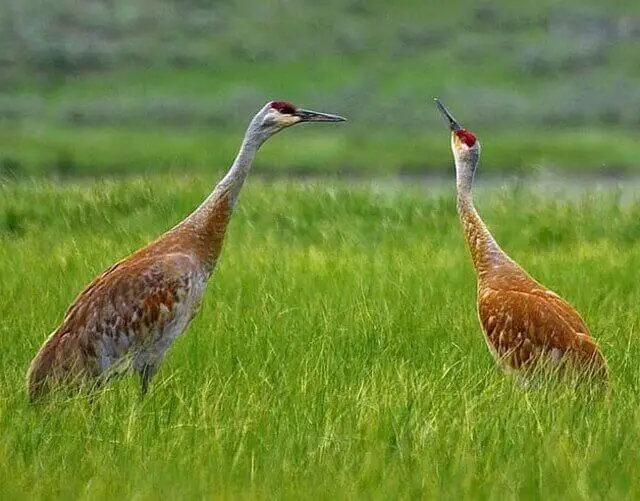
One of the largest and most distinctive North American cranes is the Sandhill Crane (Grus canadensis). These are tall, long-necked birds with a wingspan of over 6 feet. Sandhill Cranes range across much of North America, from Alaska and Canada down to Mexico. They live in a variety of habitats, including wetlands, meadows, prairies, and agricultural land.
Sandhill Cranes feed on a variety of items, including seeds, insects, rodents, small reptiles and amphibians. They are monogamous birds and typically mate for life. The female builds the nest in a shallow depression on the ground, often near water. She lays 2-4 eggs and both parents incubate them for about 28 days.
| Monogamous Behavior |
|---|
| Sandhill Cranes are known for their strong monogamous bonds. They typically mate for life and form long-lasting partnerships. These monogamous pairs work together in various aspects of their lives, including building nests, incubating eggs, and raising their young. Sandhill Cranes exhibit remarkable fidelity to their mates. |
Whooping Cranes
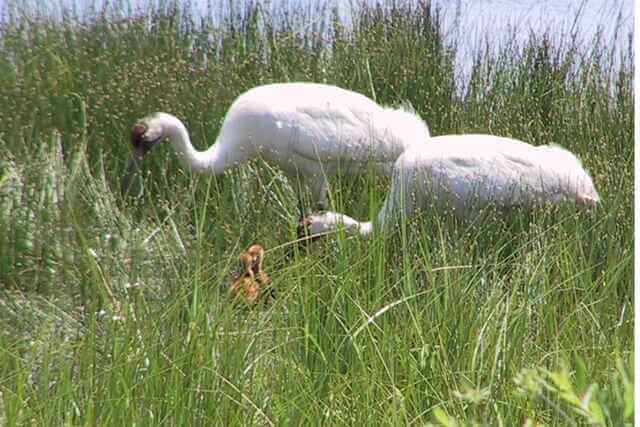
Whooping Cranes are a migratory bird that can be found in the wetlands of North America. They have a large range which includes parts of Canada, the United States, and Mexico. They are also known to migrate to Central America and South America.
Whooping Cranes prefer to live in areas with dense vegetation, where they can find food and protection from predators. Their diet consists mostly of fish, but they will also eat insects, amphibians, and small mammals. It is believed that Whooping Cranes are monogamous birds, meaning they mate for life.
| Monogamous Behavior |
|---|
| Whooping Cranes are renowned for their lifelong monogamous partnerships. They typically form strong bonds with a single mate and remain together throughout their lives. These monogamous pairs collaborate in nesting, raising offspring, and other aspects of their lives, exhibiting remarkable fidelity to their chosen partners. |
Barn Owls
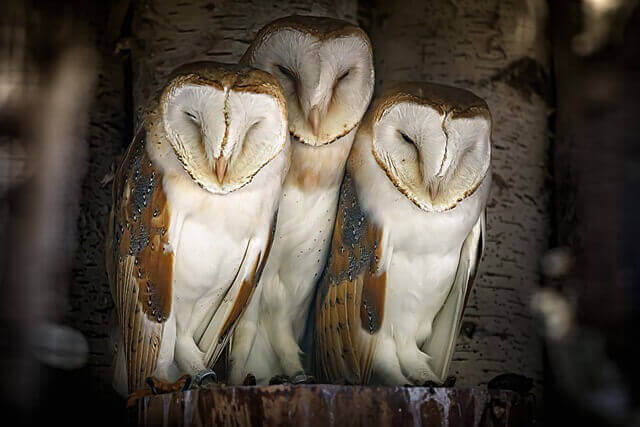
Barn Owls (Tyto alba) are one of the most widespread owl species, with a range that extends from Europe and North Africa to Asia and Australia. They inhabit a variety of habitats, including agricultural land, woodland, marshes, and urban areas.
Barn Owls prey on a wide variety of animals, including rodents, small mammals, birds, reptiles, and amphibians. Although they are typically monogamous, some pairs may exhibit polygyny. Barn Owls are cavity nesters and typically lay 2-5 eggs.
| Monogamous Behavior |
|---|
| Barn Owls are well-known for their monogamous behavior. They typically form monogamous pairs and mate for life. These pairs work together to raise their young, sharing responsibilities such as hunting, nest maintenance, and protecting their nest site. Barn Owls exhibit a strong and enduring bond between mates. |
Lovebirds
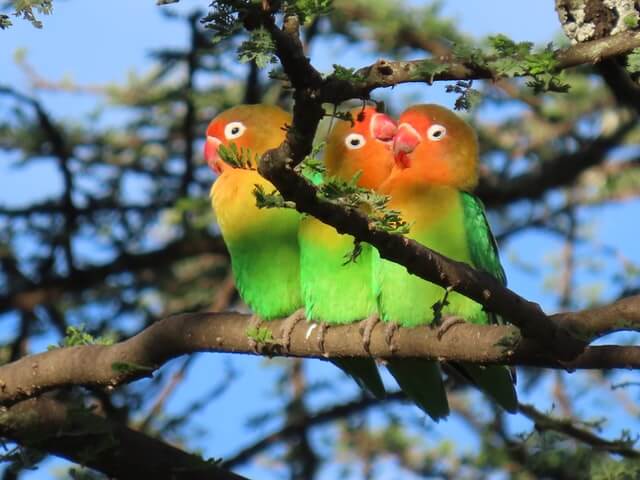
Lovebirds are a type of small parrot found in Africa. There are nine different species of lovebird, all of which have a range that extends from Senegal and Gambia in the west to Ethiopia and Somalia in the east. Lovebirds can be found in a variety of habitats, including savannas, woodlands, and gardens.
They typically eat seeds, fruits, and insects. Lovebirds are monogamous birds, meaning they mate for life. When paired up, lovebirds will often preen each other’s feathers and sit close together. If one partner dies, the other will often not find another mate.
| Monogamous Behavior |
|---|
| Lovebirds are well-known for their strong monogamous bonds. They typically mate for life, forming a deep and lasting connection with their chosen partner. These affectionate parrots engage in behaviors like mutual preening, close nesting, and shared parenting duties, emphasizing their monogamous nature. |
Mourning Doves
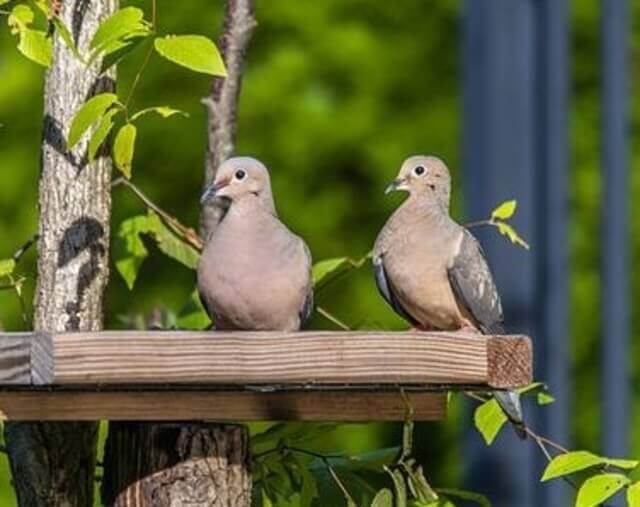
Mourning Doves are the most common dove in North America. They have a wingspan of about 15 inches and weigh between 4 and 5 ounces. Mourning Doves live in open areas such as fields, parks, and gardens. They eat seeds, fruits, and insects.
Mourning Doves form monogamous pairs and breed from March to September. The female lays 2 to 4 eggs, which the male incubates for 14 days. The young can fly within two weeks of hatching and are independent shortly thereafter.
| Monogamous Behavior |
|---|
| Mourning Doves are known for their strong monogamous bonds. They typically mate for life and form enduring pairs. Both partners collaborate in building nests, incubating eggs, and caring for their offspring. Their monogamous behavior is a prominent feature of their breeding and family life. |
Scarlet Macaws
Scarlet Macaws are one of the most popular macaw species due to their bright colors and engaging personality. They are found in Central America, South America, and parts of Mexico. Scarlet Macaws live in a variety of habitats including rain forests, woodlands, and scrublands.
They typically eat a variety of fruits, nuts, and seeds. While not definitively monogamous, Scarlet Macaws are known to mate for life and typically remain together until one dies.
| Monogamous Behavior |
|---|
| Scarlet Macaws exhibit monogamous behavior and often form lifelong pair bonds. They remain faithful to their mates, sharing responsibilities such as nest-building, incubating eggs, and raising their offspring together. This monogamous nature helps ensure the successful reproduction and survival of their species. |
Atlantic Puffins
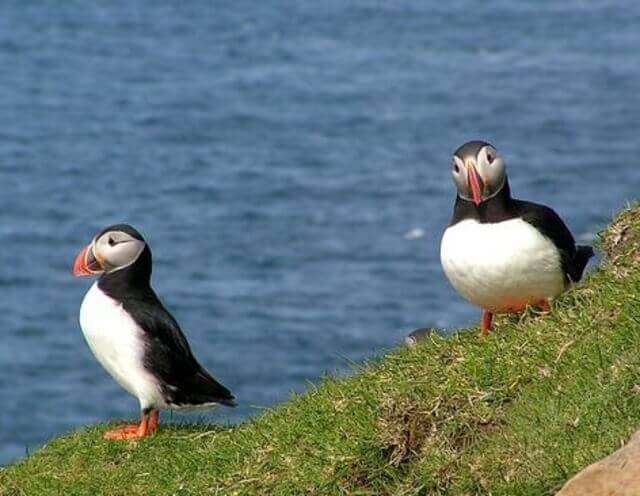
Atlantic puffins are a species of seabird that can be found in the North Atlantic Ocean. They are known for their brightly-colored beaks and their characteristic flight patterns. Atlantic puffins range in size from about 11 to 15 inches in length, and they weigh between 14 and 30 ounces.
They can be found on rocky cliffs near the shoreline, as well as in open water. Their diet consists mainly of small fish, which they catch by diving into the water. Atlantic puffins are monogamous birds, meaning that they mate with one partner for life.
| Monogamous Behavior |
|---|
| Atlantic Puffins are known for their strong monogamous bonds. They typically mate for a breeding season, and often for multiple seasons or even life. They share responsibilities in raising their young, taking turns incubating eggs and feeding chicks. These birds exhibit remarkable fidelity to their mates and nesting sites. |

